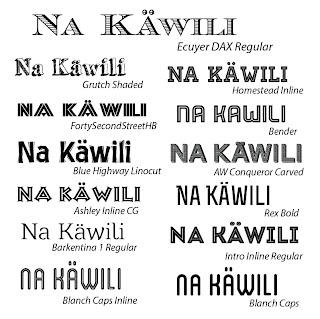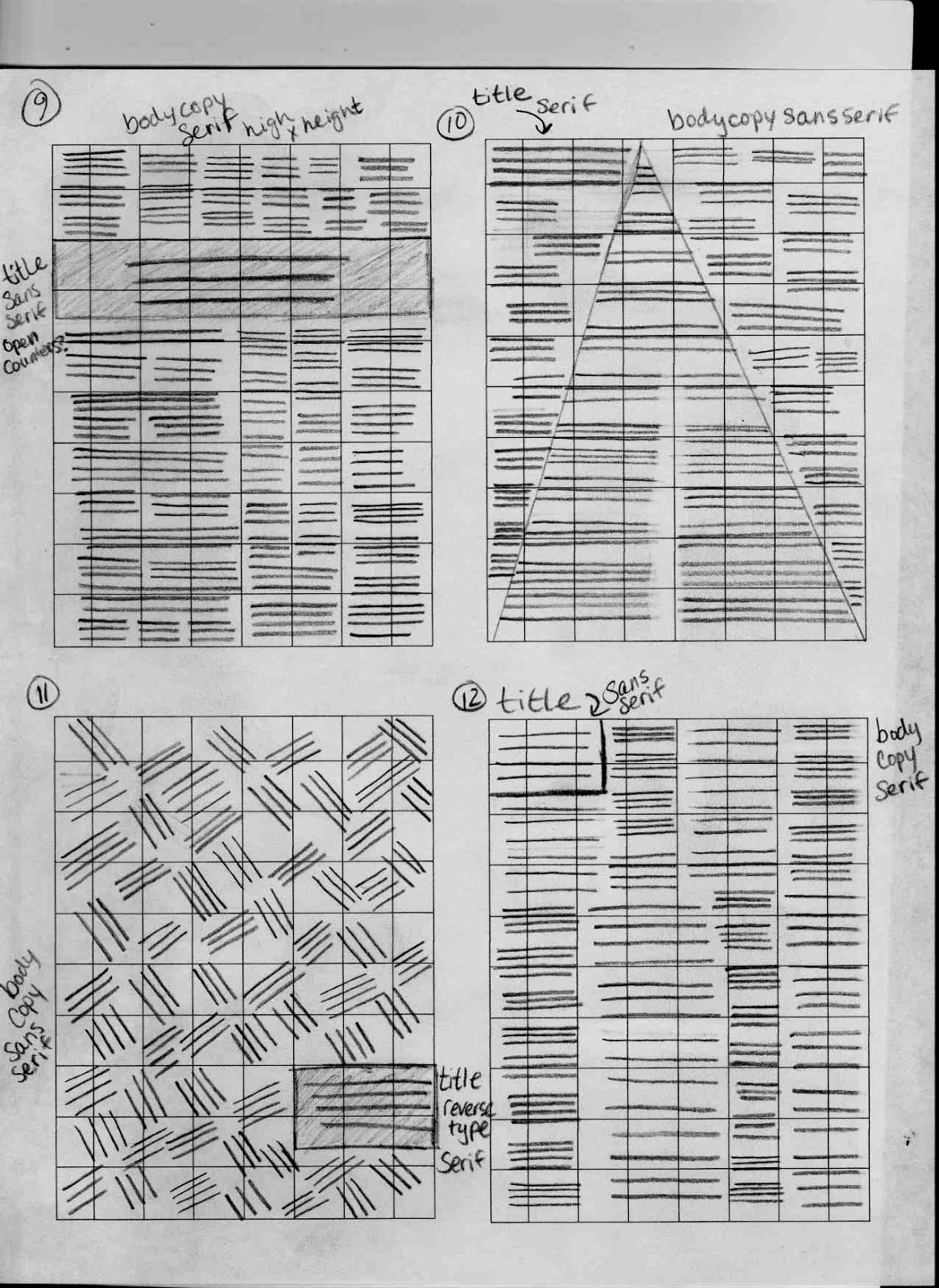A screenshot of my in-progress menu is below (after the in-progress critique from yesterday). I still have a bit of work to do on it but I'm happy with how it's coming along. The order of the pages needs work and I'll get to that soon. (It can get confusing in my mind when I'm trying to visualize the order of my pages!)
Appetizers
Grilled Vegetable & Bacon Pineapple Skewers - 15
Grilled cucumber, tomato, mushroom & squash w/ bacon wrapped pineapple on a wooden skewer. Served
w/ spicy orange sauce or light coconut vanilla cream on the side.
Crab & Kumara Bisque - 20
A creamy, thick soup of crab & sweet potato.
Papaya Lime Soup - 15
Fresh, local papaya blended w/lime juice, oranges, mango & pumpkin. Served chilled.
Ahi Poke - 25
Raw ahi tuna w/ shallots, green onion, Soy sauce & sesame seeds.
Creamy Crab Lettuce Wraps with Coconut-Lime Dip - 20
Crab Stuffed Cucumbers - 20
Entrées
Poisson cru (National dish of French Polynesia) - 40
Raw yellow fin tuna & halibut marinated w/ fresh limejuice. Served w/ coconut milk, chopped tomato,
cucumber, carrot & spring onion over white rice or fresh cabbage & Romaine lettuce salad.
Macadamia & Coconut Crusted Tilapia - 45
Fresh baked tilapia w/ a coating of finely crushed macadamias & coconut. Served w/ grilled sesame
mango asparagus & poi (taro mixed w/ banana & coconut milk).
Grilled Shutome (Swordfish) w/ Baked Taro - 50
Locally caught swordfish seasoned w/ our special blend of local herbs & spices. Served w/ baked
sliced taro (a potato-like root vegetable) & a side of fresh mango salsa (mild or spicy).
Pork Curry w/ Bananas - 45
Local pork seasoned w/ curry & garlic in a papaya banana sauce. Served w/ sweet potatoes.
Coconut Vanilla Chevrettes - 40
Local, small freshwater shrimp sautéed in vanilla, olive oil, dark rum & coconut milk. Served w/ lightly
sautéed tomatoes, cucumber & sweet corn.
Teriyaki Broccoli Beef, Pork or Chicken - 35
Choice of beef, pork or chicken & broccoli teriyaki served w/ Pineapple fried rice.
Desserts
Kiwi Mango Cheesecake - 25
White Chocolate Macadamia Tart - 20
Tahitian Vanilla Crème Brulee - 30
Po’e - 20
A Tahitian pudding w/ vanilla, banana, pineapple & orange topped w/ toasted coconut.
Breadfruit Tart - 30
Breadfruit, banana, strawberry & star fruit in a macadamia & almond crust.
Drinks
Hinano - 15
Tahitian beer
Watermelon Honey Martini - 20 Watermelon, honey, lime & silver rum.
Maita'I (Tahitian for “good”) - 20 Rum, orange curacao, lime & orange.
Piña Colada - 20
Lava Flow - 25
Rum, coconut rum, strawberries, banana, pineapple & coconut cream.
Maui’s Wines, local Hawaiian winery
by the glass - 25 by the bottle - 75
Pineapple wines
Hula O’Maui
Maui Blanc
Grape wines
Ulupalakua Red
Lokelani (sparkling wine)
****************************************************************************






















































